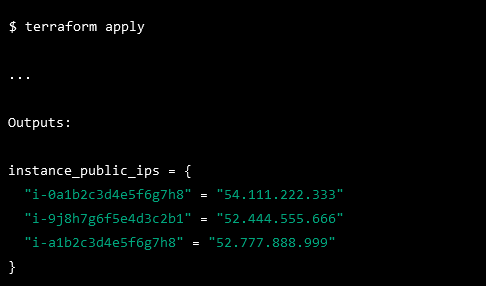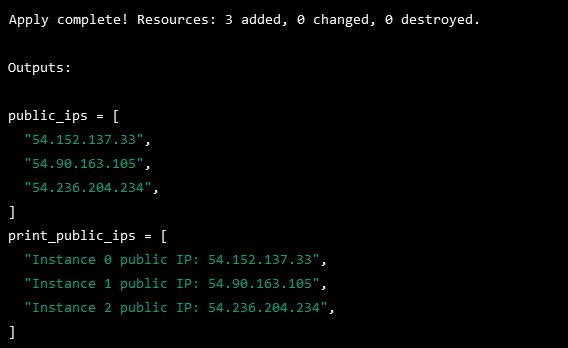Terraform For LoopTerraform is an infrastructure-as-code (IaC) tool. It is used to create and manage infrastructure resources in a declarative way. It enables the user to define the infrastructure as a code and automates creating and managing infrastructure resources. One of the most useful features of Terraform is the ability to use loops in the code to create and manage multiple resources at once. In this article, we are going to explore Terraform loops, including their syntax, examples, advantages, and disadvantages. Terraform LoopsTerraform loops allow the user to iterate over a set of values and create multiple resources with the same configuration. There are two types of loops supported by Terraform: for_each and count. 1. For_Each LoopThe for_each loop creates multiple resources with the same configuration, each with a unique name or ID. It works by iterating over a map or set of strings, and for each item in the map or set; it creates a new resource. Syntax Example Output: 
Explanation In the above example, we use a for_each loop to create an EC2 instance in each region specified in the region's variable. The for_each loop is applied to the aws_instance resource and creates an instance for each element in the regions list. The output block uses a for expression to create a mapping of instance IDs to public IP addresses. This output is useful for debugging or verifying the instances that were created. 2. Count LoopThe count loop is used to create a fixed number of resources with the same configuration. It defines a numeric count value and creates a new resource for each count value. Syntax: Example Output: 
Explanation
Advantages of Terraform LoopsThere is some benefit to using the terraform loop. These are as follows.
Disadvantages of Terraform LoopsThere are also some disadvantages to using the terraform loop. These are as follows.
ConclusionTerraform loops are a powerful feature that can help the user to manage the infrastructure more efficiently and effectively. Whether the user works with a small or large number of resources, Terraform loops can simplify creating and managing them. However, as with any Terraform feature, the main thing is understanding loops' syntax, logic, and limitations before using them in the code. By doing so, anyone can ensure the Terraform code is reliable, maintainable, and scalable.
Next TopicTerraform Format
|
 For Videos Join Our Youtube Channel: Join Now
For Videos Join Our Youtube Channel: Join Now
Feedback
- Send your Feedback to [email protected]
Help Others, Please Share










